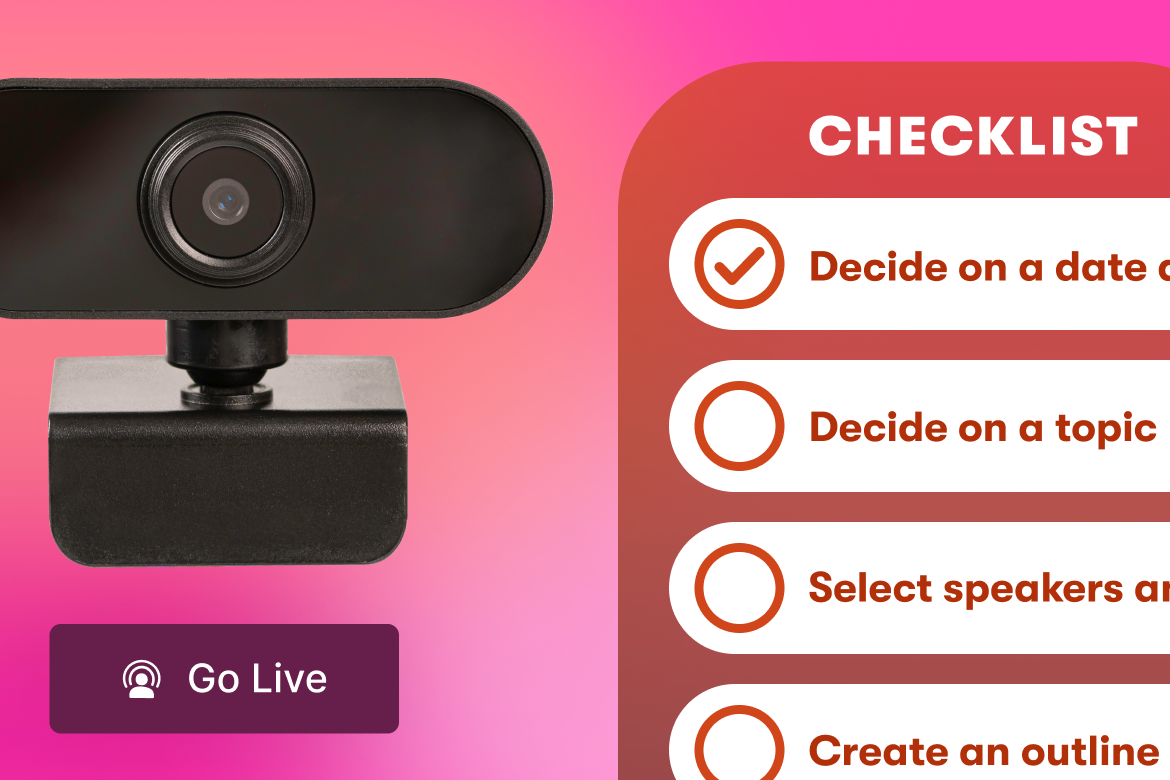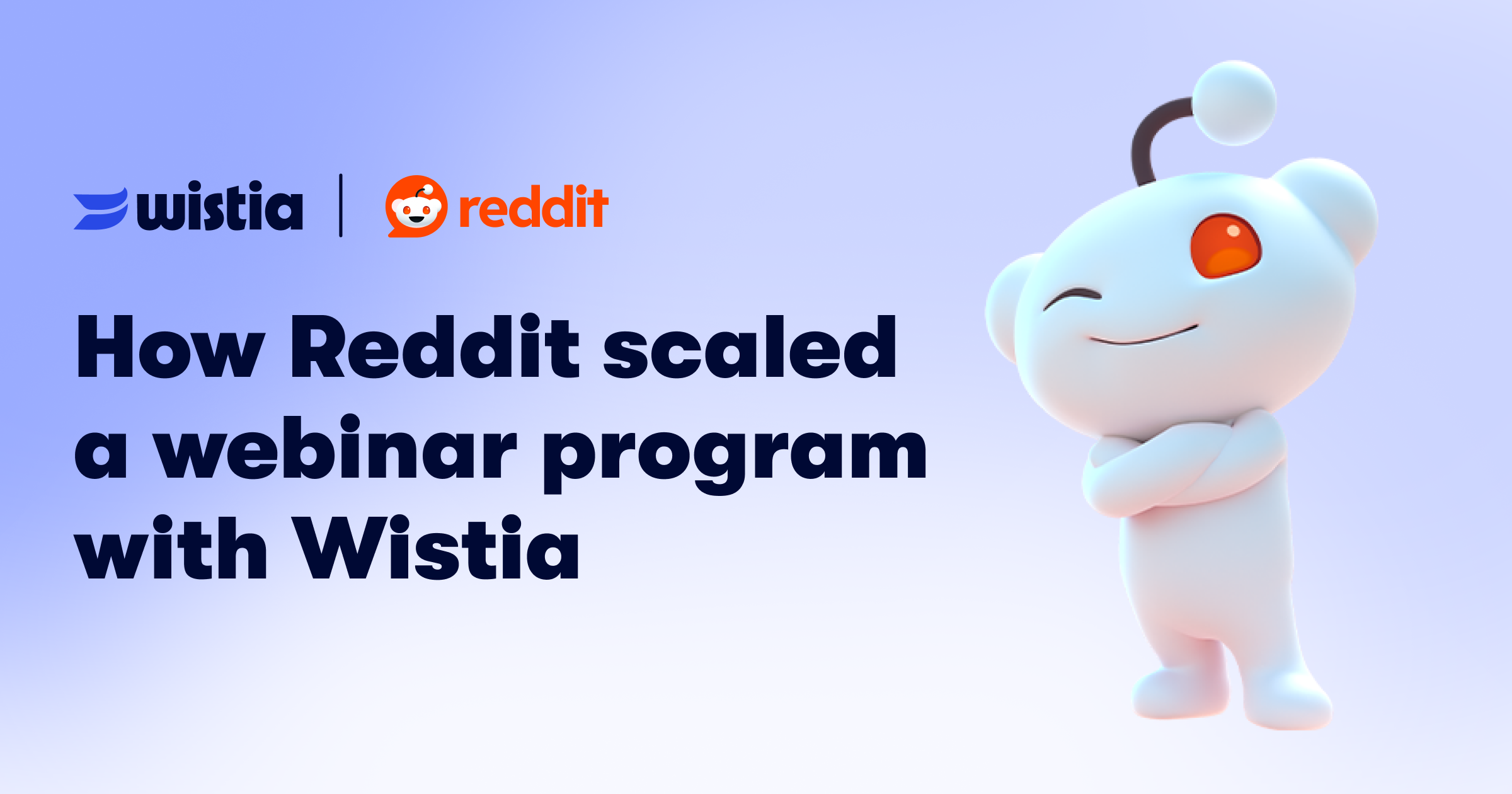5 Creative Ways B2B Brands Can Leverage the Power of Video
November 22, 2021
Topic tags
You likely wouldn’t call a video featuring a young kid dressed as the iconic Star Wars villain Darth Vader “corporate.” But the German automaker Volkswagen rolled the dice and created this fun TV commercial.
Their gamble paid off. The video played throughout Super Bowl XLV to promote the new Volkswagen Passat and became one of the brand’s most iconic video ads. Time has even credited the commercial with changing the scope of Super Bowl commercials forever.
For B2B companies, product demos, webinars, and customer testimonials make up the bulk of video efforts. But just because you’re a business that uses video doesn’t mean that your videos have to be all business. While these types of videos are essential to the B2B marketing mix, there are tons of other ways you can harness the power of video to engage your audiences.
“Just because you’re a business that uses video doesn’t mean your videos have to be all business.”
To do so, B2B brands need to think outside of the B2B box. Take inspiration from consumer brands like Volkswagen that use video to delight and inspire their customers.
As a B2B company, we know how difficult it can be to break down barriers and get the creative juices flowing — but we’re here to help! In the past, we’ve covered everything from the first three videos brands should make to mastering customer testimonial videos and even how to use video for social media. Now, we’re shining a light on creative ways for B2B brands to use video.
1. Add a video to your 404 page
How many times have you scrolled through a website and clicked on a link only to find yourself smack dab in the middle of a 404 error page? Doh! Not only are you met with a message that makes you think you broke the Internet, but usually there’s no clear next step to get you back on the right path.
We can all agree that getting a 404 error page can be a frustrating roadblock for website visitors. It might not seem like that big a deal at first, but, according to tech talent recruitment company Toptal, “88% of online consumers are less likely to return to a site after a bad experience.” In short, you can pretty much say sayonara to anyone who runs into a 404 error page on your site with no immediate resolution on the table.
A useful 404 page with a search box or links to top pages is a great starting point. But a 404 page with a video is an even better easter egg to surprise your website visitors and turn their bad experience into a delightful adventure.
We’ve taken this approach at Wistia with our Lenny-inspired 404 page. We offer folks access to our main navigation to get back on track and promote an otherwise hidden Channel full of delightful Lenny videos. Awww! This is sneaky because the easter egg actually showcases our Channels product in a fun and non-intrusive way.
Impact, a digital marketing agency based in New Haven, Connecticut, uses a looping video on their 404 page to lighten the mood and direct folks to the agency homepage. The page is simple but offers loads of personality and snappy, conversational copy that gives you a feel for the agency’s brand — friendly and approachable.
2. Add video to your ‘thank you’ confirmation pages
Another sneaky spot to add a surprise video? Your ‘thank you’ confirmation pages. People in B2B are used to filling out forms and wired to expect some type of messaging here, so why not surprise them with a video?
This is another tactic we’ve employed here at Wistia. Whenever someone submits a form on our pricing page, they’re met with this Mighty Ducks-inspired video. Check it out!
The video accomplishes a few things. It sets expectations on what folks can expect after submitting a form, introduces a few sales team members, and primes folks on what they can get excited about within the Wistia product. But most importantly, it provides a human touch and shows the fun side of our brand.
3. Video for email unsubscribes
It’s never fun when someone unsubscribes from your emails. They’re essentially telling you that they are no longer interested in your content. While this metric might be a hard pill to swallow, it’s ultimately best to let your audience move on when the time is right. And it doesn’t hurt to communicate that there are no hard feelings in the process.
HubSpot nailed this approach with their email unsubscribe video.
This video works well for HubSpot because it aligns so closely with their product and their marketing audience. While this tongue-in-cheek approach might not be right for every brand, there are other ways to bring a little humor to the table. Check out this example from charity: water. During their unsubscribe sequence, they give folks the option to unsubscribe or watch their CEO get doused with water.
Once again, this concept is brilliant because it ties in with the company mission of providing clean water, and it also allows folks to stick around for more content. As a non-profit, emails are vital for maintaining and nurturing donors, so serving up a little humor and humanizing the brand is just what the doctor ordered to keep folks on board.
4. Employee intro videos for email
If you’re on a sales or customer success team, adding a video to your email signature is a terrific way to further connect with your customers. To do this at scale, figure out how long you want your videos to be (around one minute works great) and a general template that’s easy to replicate. Here’s a quick example from Margot at Wistia.
This video didn’t take very long to make, it was a ton of fun to shoot, and the customers who discover it stayed engaged. Wins all around!
BambooHR takes a similar approach for their sales team. Selling is hard, especially now that a majority of the B2B sales process is done online. BambooHR wanted to re-think the strategy to build better connections with prospects and customers. Let’s meet Preston!
BambooHR did an unbelievable job of turning Preston into a new friend. Taking the extra step to shoot outside of the office was also a nice touch to let potential customers know that BambooHR values creativity and fun in the workplace, which might end up being a key differentiator.
5. Develop a branded video series
Some businesses are already deeply invested in video content (hooray!) and are ready to take their video marketing strategy to the next level. Creating an original branded video series is a natural next step in the video marketing journey.
Keep in mind — your branded video series should inspire and entertain your audience above all else. Creating an overly promotional series that pushes your product or service will not engage and grow your audience over time. Your goal isn’t to sell, sell, sell, but instead to deeply connect with your audiences and build affinity for your brand.
If you’re wondering how to get started — don’t fret. We’ve identified three ways to create your first video series following the build, borrow, buy framework. Hiring a dedicated showrunner and video team is a great option for brands that want to have more control over video projects, while outsourcing to freelancers or even purchasing creative content is a good route for folks looking to hit the ground running.
Mailchimp has already taken this step with its in-house studio Mailchimp Presents. Between January and May 2019, Mailchimp reported over a million views of its branded shows that included series about everything from small business transformations to people who work from their laptops.
Not to toot our own horn or anything, but we also have our own in-house studio with a number of great shows. If you’re looking for your next binge-worthy show to watch, check out our Webby Award-winning series One, Ten, One Hundred, where we challenge a video production agency to create three ads using three very different budgets.
Don’t be afraid to think outside the B2B box
Today, a B2B marketer’s mandate is not to simply grab attention — it’s holding it. As a result, all marketing activities need to be consistently excellent. By creatively infusing surprising video moments into your B2B brand experience, you’ll build a lasting impression and stand out from the crowd. So get creative, and don’t be afraid to try new things outside of the conventional B2B realm.






